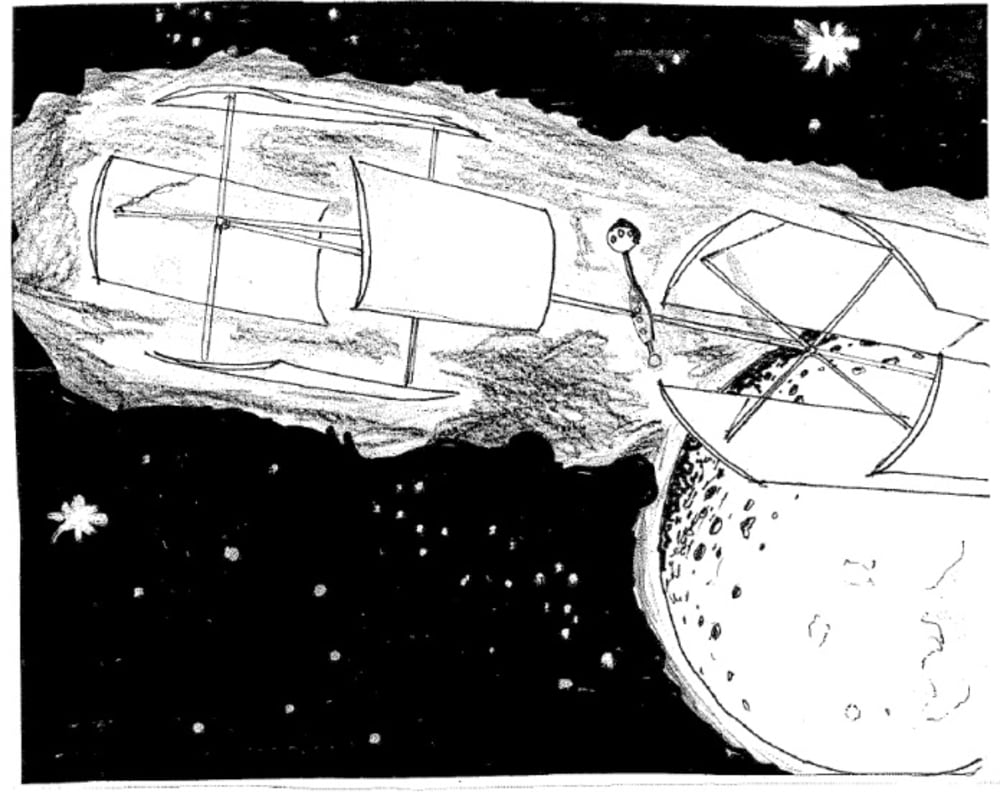I introduce another type of solar-photon spacecraft, differing from the solar sail or heliofoil.
Consider a rotating cylinder rotating along an axis perpendicular to oncoming light. The portion of the reflected light from the part of the cylinder rotating into the light is blue-shifted and the part that is rotating away is red-shifted. When we combine this with the momentum transfer of photons to an object we can see that the part of the cylinder that is rotating into the photons has a greater force on it than the part of the cylinder that is rotating away. This causes a net force, perpendicular to the axis of the cylinder and the direction of light propagation, away from the blue-shifted end, called the Yarkovsky Effect. This effect on a rotating asteroid ‘s orbit was measured.
Note similarity between it and the Magnus Effect, which governs the lift of rotating cylinders is a stream of a molecular fluid, which is the basis for aerodynamical wing design. The Joukowski Transform is a conformal mathematical coordinate transformation (Background, see Caratheodory, 1951, and Kober, 1957) which alters the shape of the Magnus cylinder to an airfoil, and allows us, through that mathematical transformation, to predict all of the aerodynamic properties of the airfoil. A similar transformation can be done for the Yarkovsky effect cylinder. This transformation is tedious and the details will be omitted. However, the construction of a photonic airfoil ( or a photofoil) had to take into account a different set of a photon gas from a molecular fluid.
- Photons always travel at the speed of light in a vacuum.
- Photons, unlike molecules, are almost non-interacting among themselves. Unlike molecules, surrounded by electrons (fermions) they do not exert outward pressure (except on a very tiny scale due to the Casimir Effect).
A photofoil distinct from traditional airfoils must be designed for use in a photon gas. The more efficient shapes for a photofoil is a cross section like a scimitar. This allows blue-shifting and red-shifting to occur on the lower and upper surface. Because the photon momentum in reflection is twice that of absorption, the surface of the photofoil should be coated with a substance that makes it black or silver in parts as required.
Several of these photofoils and arrange them in a circular pattern, and allow them to enter a photon stream. As the photofoils rotate, they alternate their silver and black parts of their surfaces to maximize the blue-shifted forces and minimize the red-shifted ones (or if in shadow, they do not exist). Large gossamer photofoils could be thus arranged on spaceships, sidewheeler like, and this would efficiently move through seas of photons from a variety of sources in a manner more efficiently that solar sails alone. Square meter for square meter the photofoil cyclogyroidal spacecraft is more efficient than the solar sail, because the cyclogyroidal-like spacecraft can both use direct photonic force and the Yarkovsky Effect.
Like this entry?
-
About the Entrant
- Name:Francis Graham
- Type of entry:individual
- Patent status:none

